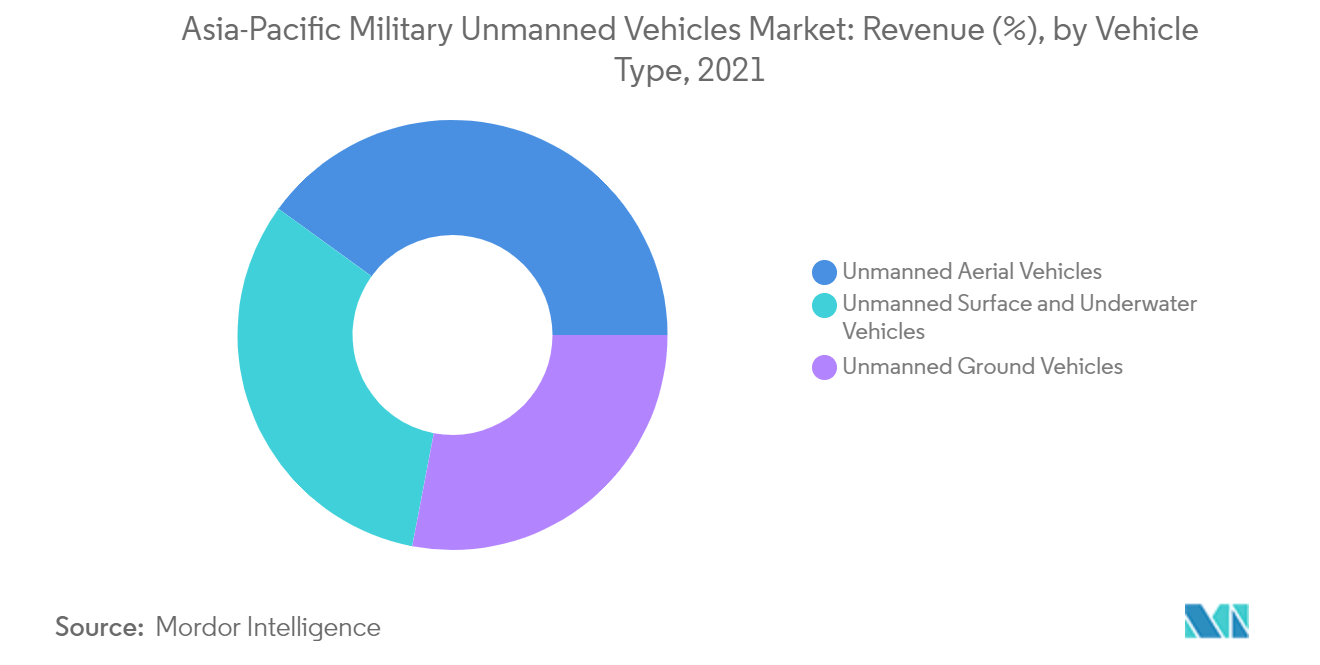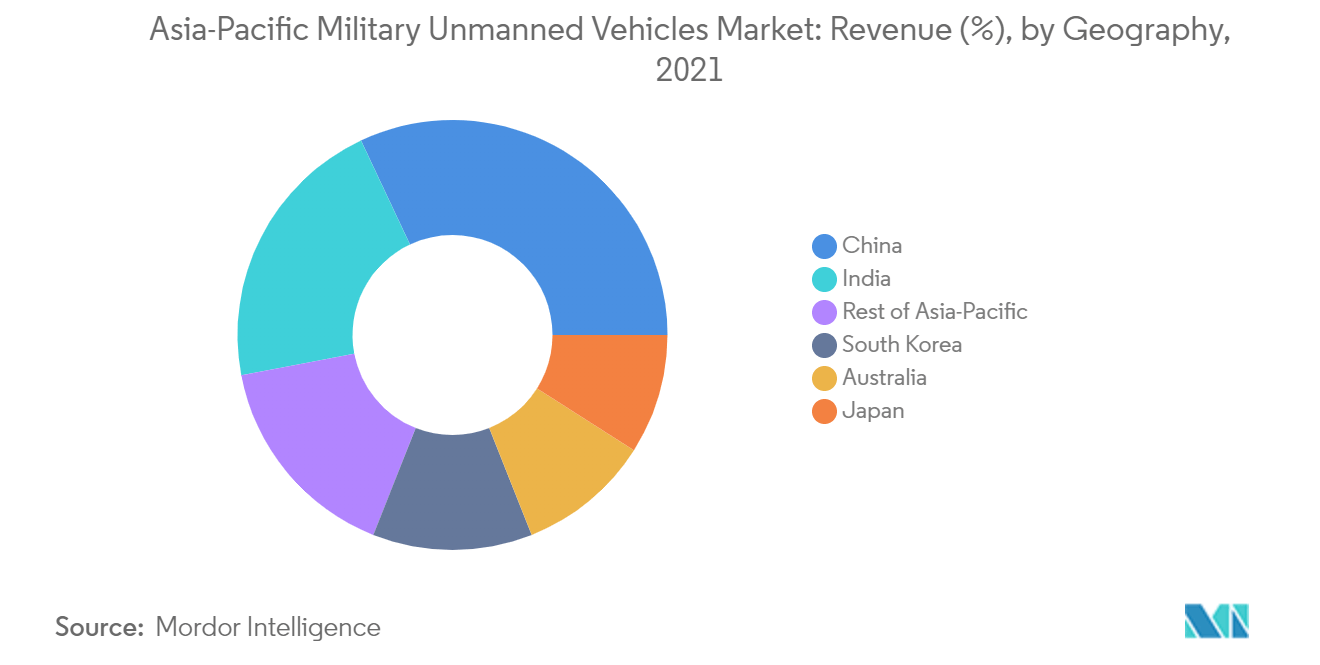Market Trends of Asia-Pacific Military Unmanned Vehicles Industry
This section covers the major market trends shaping the APAC Military Unmanned Vehicles Market according to our research experts:
Unmanned Surface and Underwater Vehicles Segment Expected to Witness Robust Growth During the Forecast Period
The unmanned surface and underwater vehicles segment of the market is estimated to witness the highest growth during the forecast period owing to the increasing investments toward the development and procurement of unmanned sea vessels for strategic and tactical superiority in the water. For instance, China is currently developing large, smart, and relatively low-cost unmanned submarines with long endurance capacity to perform a wide range of missions, ranging from reconnaissance to mine placement to even suicide attacks against enemy vessels. Similarly, to counter the threat of manned and unmanned vessels of the People's Liberation Army Navy (PLAN), the countries in the region are robustly adopting unmanned sea vessel technology. As part of strengthening maritime capabilities, Japan is currently focusing on its OZZ-5 Unmanned Underwater Vehicle (UUV), an autonomous underwater vehicle. The UUV is 4 m long and 50 cm in diameter with a continuous mission life of nine hours and a maximum speed of seven knots. Mitsubishi Heavy Industries Ltd is the prime contractor of OZZ-5 UUV. The UUV is expected to be operated alongside a new unmanned surface vessel (USV) (currently being developed by Japan Marine United (JMU) Defense Systems) for mine countermeasure missions. Such development of new models and planned deployment during the forecast period is anticipated to accelerate the market's growth during the forecast period.

China Held the Highest Market Share in 2021
China held the largest share in the market in 2021 since it accounted for the highest military expenditure in the Asia-Pacific region. The country's military spending increased from USD 196.54 billion in 2015 to USD 252.3 billion in 2020. China boosted its defense budget for FY 2021 by 6.8% compared to FY 2020 as it continued to modernize and strengthen its armed forces. Tensions with Taiwan, India, and the United States have pushed China to advance in unmanned technology across all platforms. In recent years, China also pushed for the Hongdu GJ-11 and other equivalent UCAVs to enter serial production in 2022 and open a second GJ-11 production line under the 15th Five-Year Plan to reach the goal of 200 operational long-range UCAVs by 2030. Considering the rate at which China is advancing in terms of UAVs, it is estimated that the country will account for almost 25% of global military unmanned aerial vehicles by 2024. In recent years, the country also entered the unmanned underwater vehicles market and deployed these systems in the Indian Ocean and the South China Sea. China's Sea Wing Gliders are similar to UUVs deployed by the US Navy's Littoral Battlespace Sensing-Glider. China is also working to incorporate artificial intelligence and UUV technology to boost its submarine capabilities. Such development of new unmanned systems and the growing procurement of these systems by Chinese military forces are expected to drive the market's growth in the country.


